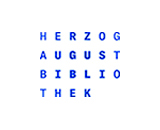Calender
Event Information:
-
Mon29Jul2024Tue30Jul2024HAB Wolfenbüttel
WS: Visualisation of Philosophy – Text and Image in Early Modern Books
Philosophy often appeals to the reader's imagination in order to visualise particularly difficult ideas: Sometimes actual images accompany philosophical works, and their status can vary in that they can serve as a means of explaining the content of a text or as an alternative to the text itself. The latter can be particularly useful when philosophical ideas need to be conveyed independently of the text, e.g. when addressing a readership that has no access to the written text.
From 29-30 July 2024, a conference was held as part of the SPP 2130 subproject German Mysticism in Translation. The Invention of a European Idea at the Herzog August Bibliothek Wolfenbüttel under the direction of Prof. Dr Anne Eusterschulte (Freie Universität Berlin), Dr Cecilia Muratori (Università di Pavia) and Dr Antje Wittstock (Freie Universität Berlin), a workshop entitled ‘Visualising Philosophy – Text and Image in Early Modern Books’, which was dedicated to the question of the various functions of images as a philosophical tool of transmission (programme).
The workshop presentations dealt with questions of text-image relationships and multimedia interweaving, various forms of imagery (such as image, symbol, hieroglyph, emblem and imprint) possibilities of linguistic visualisation. The examples, which dated primarily from the Early Modern period, ranged from the hermaphrodite as a mental image (‘Denkbild’) of alchemy, the pictorial programme in Heinrich Khunrath's Amphitheatrum sapientiae aeternae and Michael Maier's Atalanta fugiens and its ‘ludic principle’ to the figure of Archaeus in Parcelsus, text-image references in the Maximes of the Duc de la Rochefoucauld and the reception of hermeticism in Sebastian Franck. The possibilities of (digitally) visualising ideal city designs of the Renaissance (using the example of Francesco Patrizi's La Città Felice) and comments on the symbolism of Franz von Baader marked the outlook and perspectives of the research question.
The treatise An Explication of Three Very Different Tables by the philosopher and theologian Dionysius Andreas Freher (1649-1728), which is particularly relevant to the SPP project, and the accompanying fold-out picture panels (Three Tables) played a special role in the workshop: As a visual counterpart to the text, they were intended to accompany the viewer on a philosophical journey of spiritual renewal.




